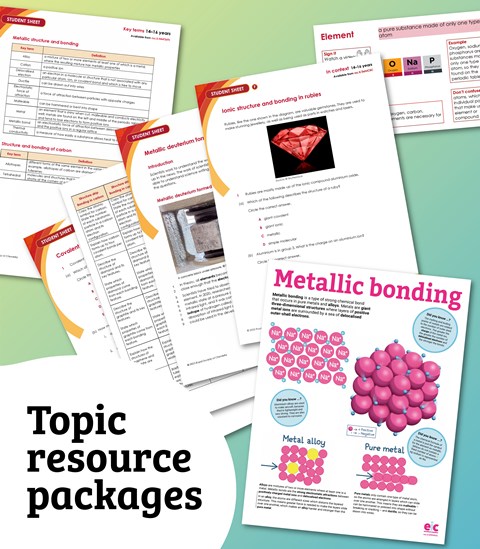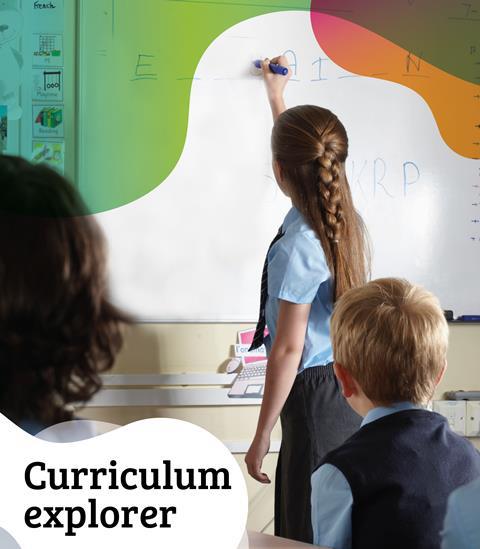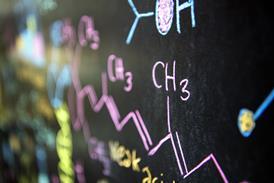All Maths skills articles – Page 2
-
 Poster
PosterCalculating moles and using Avogadro’s number
Use this explainer to help your students grasp the relationship between moles, mass and molecular mass
-
 Ideas
Ideas5 effective ways to teach balancing equations
Tried-and-tested approaches to build student skills and confidence
-
 Poster
PosterBrilliant buffers
Use this infographic with your 16–18 students to develop their understanding of pH and buffers
-
 Resource
ResourceFertilisers and sustainability | 16–18 years
Investigate the rate of hydrolysis of urea and assess your learners’ practical skills, includes extension green chemistry questions on sustainable fertilisers
-
 Resource
ResourceThe chemistry of a meteorite | 11–14 years
Data analysis and graph drawing activity for 11–14 year olds based on the chemical composition of the Dhofar 007 meteorite. Identify elements from chemical formula and differentiate between metal and non-metal elements.
-
 Resource
ResourceUnderstanding climate change as a process | 14–16 years
A flow diagram activity to bring together learning about the greenhouse effect and climate change, with questions to consolidate understanding
-
 Resource
ResourceMaths skills for chemistry
Resources to help your students apply their maths knowledge in their chemistry lessons
-
 CPD article
CPD articleTeaching rates of reaction post-16
Ideas and activities to help students explore reaction dynamics and mechanisms
-
 Resource
ResourceIntroducing moles numeracy worksheet | 14–16 years
Use the context of cooking to get students more comfortable with concepts such as balanced equations, ratios and reagents
-
 Ideas
IdeasStoichiometry and moles: how to explain it?
Use cooking as a fun, accessible introduction to why and how we use balanced equations
-
 Feature
FeatureHow ice cream is made
For a simple combination of milk, cream, sugar and flavourings, there is a lot of science involved in ice cream manufacture
-
 News
NewsWhat is difficult about concentration?
Fresh insight offers tips for teaching the mathematics of moles, volume and molarity
-
 Poster
PosterReal-life contexts for thermodynamics
Use this infographic with your 16–18 students and get them working with thermochemistry, intermolecular forces and free energy
-
 CPD article
CPD articleTeaching acids and bases post-16
Try these tips, ideas and activities to help you teach this topic
-
 Resource
ResourceColour by pH
Introduce learners to the pH scale and the Universal Indicator chart by using these colour by number worksheets.
-
 Poster
PosterThe science of melting chocolate
Use this infographic with your 11–14 students to develop their knowledge of changes of state and their graphing skills
-
 Ideas
IdeasBack to basics with spectrophotometry
How to demonstrate the Beer–Lambert law using your smartphone as a light meter
-
 Resource
ResourceSmartphone spectroscopy: Beer–Lambert law
Use your smartphone to measure changes in concentration across different concentrations of squash at home or in the classroom. Use your results to predict the concentration of an unknown dilution of squash.
-
 Resource
ResourceRunaway reactions
Ask your 16–18 students to take a closer look at ammonium nitrate and enthalpy
-
 Resource
ResourceReactions of alkanes and alcohols – organic chemistry worksheets | 14–16
A student worksheet for foundation and higher level. Assess learning with questions about the reactions of alkanes and alcohols.











